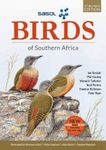![Birds of the Serengeti and Ngorongoro Conservation Area Birds of the Serengeti and Ngorongoro Conservation Area]()
Click to have a closer look
About this book
Customer reviews
Biography
Related titles
About this book
Located in northern Tanzania, the Serengeti is one of the world's most famous wildlife regions. Birds of the Serengeti is a groundbreaking and essential photographic guide, featuring more than 270 bird species most likely to be encountered in the Serengeti National Park and Ngorongoro Conservation Area. This easy-to-use guide includes 480 dazzling color photos, an attractive and handy layout, and informative and accessible text that discusses interesting behaviors and provides insights into species background. Rich in detail, this indispensable volume uses a habitat-based approach, making it simple for everyone – from the novice to the experienced birdwatcher – to locate diverse birds in this fascinating area of the world.
Customer Reviews
Biography
Adam Scott Kennedy has served as principal leader on birding holidays in Africa, South America, Europe, and New Zealand. With his wife, Vicki, he currently operates as a private safari guide, specializing in photographic and wildlife safaris in East Africa. Information on their tours and stock image library can be found at www.rawnaturephoto.com. He is the author of Birds of the Masai Mara (Princeton WILD"Guides").
Field / Identification Guide
By: Adam Scott Kennedy(Author)
224 pages, 480 colour photos
"Birds of the Serengeti and Ngorongoro Conservation Area is a photographic guide to more than 270 common bird species found in the area. Most species are represented by a single high-quality (usually half- page) photo, with additional photos where there a differences in plumage between sexes, ages or seasons. In many cases the photos give a better impression of what the bird is actually like in the field than the painted plates of other field guides to the region although, unfortunately, there are also a couple of poor- quality blurry photos. The book is arranged by habitat, with the aim of making it easier for beginners to find species. This does mean that several similar species (e.g. the cisticolas) are split up, making it difficult to compare confusion species. Would I take this book as my only field guide on a trip to the area? Probably not, not least because I have learnt the hard way the frustrations of taking a book covering only common species. However, this book makes a great companion to existing field guides to the region, so certainly earns its place in my bag."
- Martin Sullivan, BTO book reviews
















































